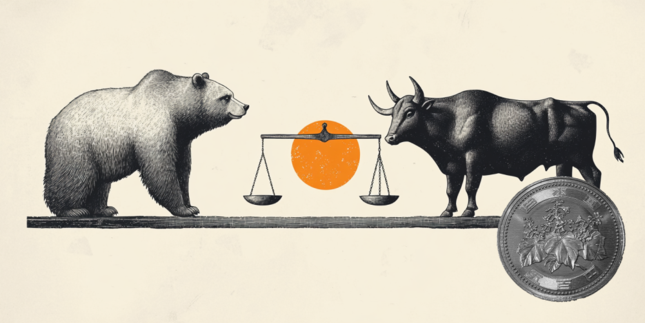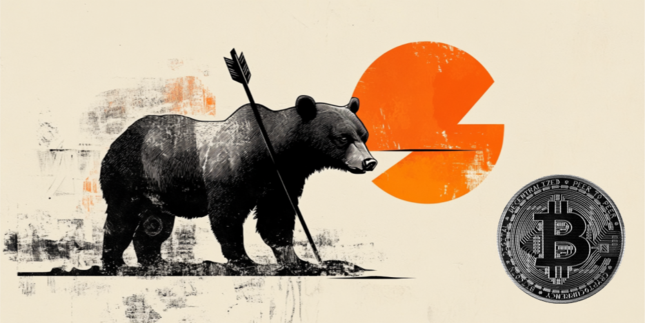ECB’s de Guindos: Trade war would mostly impact economic growth
|European Central Bank (ECB) Vice President Luis de Guindos said on Friday, “trade war would mostly impact economic growth.”
European Central Bank (ECB) Vice President Luis de Guindos said on Friday, “trade war would mostly impact economic growth.”
ECB Vice President Luis de Guindos said on Thursday that they are optimistic with regard to inflation and that they believe they will converge towards the inflation target on a stable basis in coming quarters, per Reuters.
European Central Bank (ECB) policymaker François Villeroy de Galhau said Thursday that “an increase in long-term yields, all things being equal, tightens financial conditions.”
On Thursday, as widely expected, the European Central Bank (ECB) reduced its key rates by 25 basis points at the March policy meeting. This move puts the main refinancing operations rate at 2.65%, while the marginal lending facility and deposit facility rates now stand at 2.90% and 2.50%, respectively.
The European Central Bank (ECB) announced on Thursday that it lowered key rates by 25 basis points (bps) following the January policy meeting, as expected. With this decision, the interest rate on the main refinancing operations, the interest rates on the marginal lending facility and the deposit facility stood at 2.9%, 3.15% and 2.75%, respectively.
Christine Lagarde, President of the European Central Bank (ECB), explains the ECB's decision to lower the benchmark interest rate by 25 basis points at the December policy meeting and responds to questions from the press.
AUD/USD heads toward 0.6300 early Friday, resuming the pullback from near 0.6400. The pair remains on a slippery slope despite a weaker US Dollar. US-China trade tensions and increased odds of Trump's tariffs-led global recession undermine the risk-sensitive Aussie. All eyes on US NFP and Powell.
USD/JPY trades close to 146.00, holding its recovery in the Asian session on Friday. Investors dial down bets of aggressive BoJ rate hikes, amid worries that Trump's new tariffs could negatively impact Japan's economy, helps the pair sustain its latest upswing. But buyers remain wary ahead of US NFP and Powell.
Gold price returns to the red, eyeing $3,100 again in the Asian session on Friday after facing some profit-taking in the previous session. Escalating concerns over a global trade war and a US recession boost the Gold price, a traditional safe-haven asset. The focus now stays on the US NFP data and Powell's speech.
Bitcoin stretched its decline on Thursday, briefly dropping below $83,000 as President Trump's newly announced reciprocal tariffs extended the crypto market downturn by over 4%. The sustained decline and high volatility highlight Bitcoin's increasing risk to macroeconomic uncertainties.
United States (US) President Donald Trump’s self-styled “Liberation Day” has finally arrived. After four straight failures to kick off Donald Trump’s “day one” tariffs that were supposed to be implemented when President Trump assumed office 72 days ago, Trump’s team is slated to finally unveil a sweeping, lopsided package of “reciprocal” tariffs.
The European Central Bank (ECB) is the central bank empowered to manage monetary policy for the Eurozone. With its beginnings in Germany in 1998, the ECB’s mandate is to maintain price stability in the Eurozone, so that the Euro’s (EUR) purchasing power is not eroded by inflation. As an entity independent of individual European Union countries and institutions, the ECB targets a year-on-year increase in consumer prices of 2% over the medium term. Another of its tasks is controlling the money supply. This involves, for instance, setting interest rates throughout the Eurozone. The European Central Bank’s work is organized via the following decision-making bodies: the Executive Board, the Governing Council and the General Council. Christine Lagarde has been the President of the ECB since November 1, 2019. Her speeches, statements and comments are an important source of volatility, especially for the Euro and the currencies traded against the European currency.
The Official Website, on X and YouTube
Christine Lagarde was born in 1956 in Paris, France. Lagarde, who graduated from Paris West University Nanterre La Défense, became President of the European Central Bank (ECB) on November 1, 2019. Prior to that, she served as Chairman and Managing Director of the International Monetary Fund (IMF) between 2011 and 2019. Lagarde previously held various senior ministerial posts in the Government of France: she was Minister of the Economy, Finance and Industry (2007-2011), Minister of Agriculture and Fishing (2007) and Minister of Commerce (2005-2007).
The ECB Governing Council makes monetary policy decisions at meetings held eight times a year. Decisions are made by heads of the Eurozone national banks and six permanent members, including the President of the ECB, Christine Lagarde.
Prior to the rate decision:
After the rate decision:
More generally, relatively high interest rates will usually result in a stronger Euro and vice versa.
The European Central Bank’s (ECB) decision on interest rates always has an effect on the Euro (EUR).
When interest rates increase, the European Central Bank is selling government securities to large financial firms. In turn, the financial organizations are paying in euros for these securities. This effectively decreases the amount of currency circulating in the economy. A decreasing supply leads to higher demand and therefore causes the value of the Euro to appreciate.
When the interest rates decrease, the European Central Bank floods the market with euros. This is done by purchasing government securities from financial organizations. In return for the securities, these banks and financial deals are paid in euros, therefore increasing the supply of euros in the economy. As supply increases, the value of the Euro depreciates.
The World Interest Rates Table reflects the current interest rates of the main countries around the world, set by their respective Central Banks. Rates typically reflect the health of individual economies, as in a perfect scenario, Central Banks tend to rise rates when the economy is growing and therefore instigate inflation.
In practical terms, QE means that central banks create money out of nothing to buy securities, such as government bonds. This new money swells the size of bank reserves by the quantity of assets purchased and that’s why this programme is called Quantitative Easings. The money supply is intended to flood financial institutions with capital in an effort to stimulate lending and increase liquidity.
Much of the governments’ debt is held by banks in the Eurozone and the ECB wants them to give more credits. If the European Central Bank buys government bonds, their prices rise and profitability drop even more. This is a liquidity-providing operation that weakens the value of the euro. This depreciation makes European exports cheaper and competitive, and ultimately, helps in recovering. In addition, as a result of the stimulus to internal and external consumption, the ECB combats the risk of deflation, a widespread and prolonged drop in prices, as well as the high unemployment.
The long term refinancing operation (LTRO) is a cheap loan scheme for European banks that was announced by the European Central Bank towards the end of 2011 in a bid to help ease the eurozone crisis.
Round one was carried out on 21 December, when banks took €489 billion from the European Central Bank. The loans are due to be repaid within three years at a rate of 1%, and a second round will be launched on 28 February, with the results of how much money was requested due on 29 February.
As the eurozone crisis has escalated, banks have become less stable and have less money to lend. The objective of the LTRO is to boost cash flow in the market and avoid a severe credit crunch or collapse of the banking system.




